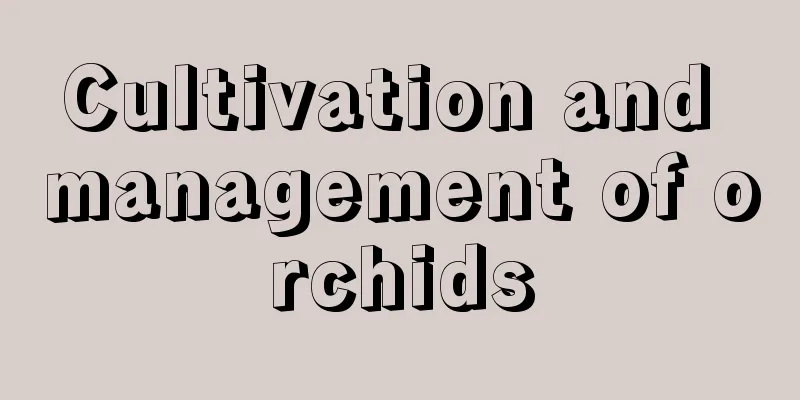Cultivation methods and precautions of yellow horn orchid

1. Breeding methods1. Pot soil selectionIf it is a domesticated yellow horn orchid, when choosing the potting soil, try to choose one that is loose and breathable, and it is best if it contains rich humus. Then choose a clay pot, purple clay pot or a plastic pot with many small holes at the bottom with good ventilation, put the soil in it, and the potting soil is ready. 2. Change the pot at the right timeWhen repotting, we need to choose the correct pot size based on its crown and age so that it can grow vigorously. When repotting, it is usually best to wait until the soil in the pot is slightly dry. First, slowly turn the pot upside down, hold the pot with one hand, and hold the plant with the other hand, then take it out and put it in the new pot. 3. Suitable breeding locationIn March and April every year, we can move it outdoors to receive sunlight. When the temperature is high in summer, it is appropriate to build a shed to provide shade so that it can receive the morning sun while avoiding the afternoon sun to prevent sunburn. 4. WateringIt is very afraid of moisture and not very resistant to drought, so it should be watered in moderation. Each time you water, you should water it thoroughly, just keep the soil in the pot moist, and never water it every day. In addition, after each rain, drain the accumulated water in the pot in time to prevent root rot. 5. Suitable temperatureIt is very afraid of cold, so if you are not growing in the south, you should move it indoors as much as possible in winter, and the temperature should be kept at least above 5 degrees. If it is hot in summer, you should cool it down in time so that it can grow normally. 6. Suitable lightingIt loves sunlight very much. In summer, we can put it in a shade shed, open the curtains every morning, let it receive the sun before 9 o'clock, and then cover the curtains. If you move it indoors, place it in a sunny spot. 2. PrecautionsWhen raising it, we will always encounter some diseases and pests, so we should try to ventilate it more, control the amount of watering, and loosen the soil appropriately to prevent diseases. If insect pests occur accidentally, you should spray them with pesticides in time to suppress the pests as soon as possible. |
<<: What soil is used to grow pennywort
>>: Are white orchids and yellow horn orchids the same?
Recommend
How to manage hydrangeas in winter?
Hydrangea , with its large flower balls and color...
How to breed leeches
Leeches, commonly known as leeches , are a relati...
Things to note when planting herbs on the balcony
Balcony farming environment The cultivation envir...
The leaves of green radish turn yellow, the roots of succulent plants rot, the buds of gardenia fall off...solve the problem with just one trick!
Green radish yellow leaves Green ivy is a foliage...
He never spends any money on growing flowers and can even grow a big garden with leftovers!
Recommended vegetables radish 1. Choose fresh and...
How to grow Cape aloe
1. Soil Cape aloe is suitable for growing in soil...
Cherry Blossom Bonsai Maintenance Methods and Precautions for Cultivating Potted Cherry Blossom Trees
Cherry blossom is a highly ornamental landscape t...
Is Gardenia suitable for deep or shallow pots?
Is Gardenia suitable for deep or shallow pots? Ga...
How to grow red sandalwood better? Where is it suitable to grow red sandalwood?
Although the small-leaf red sandalwood does not l...
Rose transplanting time and method, the best time and precautions for transplanting
Rose is a very common and common plant. Rose usua...
What should I do if the leaves of the money tree turn yellow?
The money tree , with its elegant shape, evergree...
When is the best time to plant spring cucumbers?
It is spring now, the temperature is suitable, an...
Cultivation methods and precautions for cactus grafted with Christmas cactus
1. Lighting When grafting cactus onto Christmas c...
What medicinal materials are suitable for planting in Zhejiang? What precious Chinese medicines are mainly produced in Zhejiang?
Zhejiang has a subtropical monsoon climate, with ...
How to grow kumquat in autumn
1. Adequate light Light is an important aspect in...









